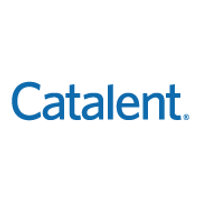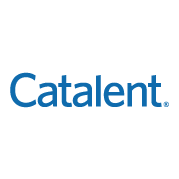
Catalent Inc
NYSE:CTLT


| US |

|
Johnson & Johnson
NYSE:JNJ
|
Pharmaceuticals
|
| US |

|
Berkshire Hathaway Inc
NYSE:BRK.A
|
Financial Services
|
| US |

|
Bank of America Corp
NYSE:BAC
|
Banking
|
| US |

|
Mastercard Inc
NYSE:MA
|
Technology
|
| US |

|
UnitedHealth Group Inc
NYSE:UNH
|
Health Care
|
| US |

|
Exxon Mobil Corp
NYSE:XOM
|
Energy
|
| US |

|
Pfizer Inc
NYSE:PFE
|
Pharmaceuticals
|
| US |

|
Palantir Technologies Inc
NYSE:PLTR
|
Technology
|
| US |

|
Nike Inc
NYSE:NKE
|
Textiles, Apparel & Luxury Goods
|
| US |

|
Visa Inc
NYSE:V
|
Technology
|
| CN |

|
Alibaba Group Holding Ltd
NYSE:BABA
|
Retail
|
| US |

|
3M Co
NYSE:MMM
|
Industrial Conglomerates
|
| US |

|
JPMorgan Chase & Co
NYSE:JPM
|
Banking
|
| US |

|
Coca-Cola Co
NYSE:KO
|
Beverages
|
| US |

|
Walmart Inc
NYSE:WMT
|
Retail
|
| US |

|
Verizon Communications Inc
NYSE:VZ
|
Telecommunication
|
Utilize notes to systematically review your investment decisions. By reflecting on past outcomes, you can discern effective strategies and identify those that underperformed. This continuous feedback loop enables you to adapt and refine your approach, optimizing for future success.
Each note serves as a learning point, offering insights into your decision-making processes. Over time, you'll accumulate a personalized database of knowledge, enhancing your ability to make informed decisions quickly and effectively.
With a comprehensive record of your investment history at your fingertips, you can compare current opportunities against past experiences. This not only bolsters your confidence but also ensures that each decision is grounded in a well-documented rationale.
Do you really want to delete this note?
This action cannot be undone.

| 52 Week Range |
42.56
63.5
|
| Price Target |
|
We'll email you a reminder when the closing price reaches USD.
Choose the stock you wish to monitor with a price alert.

|
Johnson & Johnson
NYSE:JNJ
|
US |

|
Berkshire Hathaway Inc
NYSE:BRK.A
|
US |

|
Bank of America Corp
NYSE:BAC
|
US |

|
Mastercard Inc
NYSE:MA
|
US |

|
UnitedHealth Group Inc
NYSE:UNH
|
US |

|
Exxon Mobil Corp
NYSE:XOM
|
US |

|
Pfizer Inc
NYSE:PFE
|
US |

|
Palantir Technologies Inc
NYSE:PLTR
|
US |

|
Nike Inc
NYSE:NKE
|
US |

|
Visa Inc
NYSE:V
|
US |

|
Alibaba Group Holding Ltd
NYSE:BABA
|
CN |

|
3M Co
NYSE:MMM
|
US |

|
JPMorgan Chase & Co
NYSE:JPM
|
US |

|
Coca-Cola Co
NYSE:KO
|
US |

|
Walmart Inc
NYSE:WMT
|
US |

|
Verizon Communications Inc
NYSE:VZ
|
US |
This alert will be permanently deleted.
 Catalent Inc
Catalent Inc
Catalent Inc
Investor Relations
In the intricate world of pharmaceuticals, Catalent Inc. stands out as a critical player, quietly orchestrating the development and delivery of drugs that impact lives globally. Founded in 2007, Catalent has carved a niche in the field through its commitment to advanced drug delivery technologies and supply chain services. As a contract development and manufacturing organization (CDMO), the company offers a suite of services to pharmaceutical and biotechnology firms, including drug formulation and delivery optimization, biologics development, and clinical supply services. With over 30 facilities worldwide, it acts as a pivotal partner to firms seeking to enhance the effectiveness and accessibility of their therapies without grappling with the complexities of manufacturing and logistics themselves.
The crux of Catalent’s business model lies in enabling its clients to bring medical innovations to market effectively and efficiently. By leveraging its expertise in areas such as oral, injectable, and inhalable delivery forms, Catalent ensures that drugs are not only manufactured to the highest standards but are also optimized for patient adherence and effectiveness. The company earns its revenues through long-term contracts by offering continuous support from the early stages of drug development through to commercialization. Catalent drives its growth by staying ahead of industry trends, investing heavily in biologics and gene therapy, which represent high-growth areas in the pharmaceutical industry, thereby ensuring its relevance and significance in an ever-evolving healthcare landscape.

In the intricate world of pharmaceuticals, Catalent Inc. stands out as a critical player, quietly orchestrating the development and delivery of drugs that impact lives globally. Founded in 2007, Catalent has carved a niche in the field through its commitment to advanced drug delivery technologies and supply chain services. As a contract development and manufacturing organization (CDMO), the company offers a suite of services to pharmaceutical and biotechnology firms, including drug formulation and delivery optimization, biologics development, and clinical supply services. With over 30 facilities worldwide, it acts as a pivotal partner to firms seeking to enhance the effectiveness and accessibility of their therapies without grappling with the complexities of manufacturing and logistics themselves.
The crux of Catalent’s business model lies in enabling its clients to bring medical innovations to market effectively and efficiently. By leveraging its expertise in areas such as oral, injectable, and inhalable delivery forms, Catalent ensures that drugs are not only manufactured to the highest standards but are also optimized for patient adherence and effectiveness. The company earns its revenues through long-term contracts by offering continuous support from the early stages of drug development through to commercialization. Catalent drives its growth by staying ahead of industry trends, investing heavily in biologics and gene therapy, which represent high-growth areas in the pharmaceutical industry, thereby ensuring its relevance and significance in an ever-evolving healthcare landscape.





























 You don't have any saved screeners yet
You don't have any saved screeners yet
